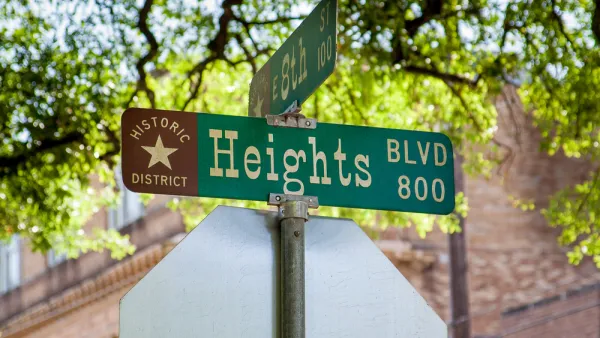A focus on historic materials could foster inequity and obscure the important social and historical meanings of a structure.

In an op-ed in Next City, Bonnie McDonald reevaluates the concept of historic preservation, arguing that “using “integrity,” as defined in regulation, as a gatekeeper to designation and incentives puts too much weight on the materiality of significance.”
McDonald writes, “Our regulations are designed to protect historic material rather than prioritize the needs of people living in and using these places today. We don’t expect people to live and work in museum-like settings, so why mandate that places arrive relatively untouched in order to receive protection?”
For McDonald, “Our field originated to preserve history, heritage, and architecture and has evolved to preserve culture, lifeways, identity, memory and story through place.” McDonald points out that even in a 1966 document, ‘material culture’ was not the focus of historic preservation. “Material changes that happen over time are a part of the story. The presence of changes that reflect a building’s evolution should not prevent its historic designation; in fact, they enrich the building’s story.”
McDonald also points out that “The culture of preciousness also perpetuates a lack of inclusion and equity in preservation,” noting that strict integrity standards can act as a discriminatory barrier for lower-income homeowners. “For property owners that are under-resourced, local designation should be accompanied by more flexible replacement guidelines, free or affordable financing for maintenance and improvements, and accessible information about the permitting process and other resources.”
FULL STORY: To Do Historic Preservation Right, We Need To Move Beyond Our Fixation on Historic Material

National Parks Layoffs Will Cause Communities to Lose Billions
Thousands of essential park workers were laid off this week, just before the busy spring break season.

Retro-silient?: America’s First “Eco-burb,” The Woodlands Turns 50
A master-planned community north of Houston offers lessons on green infrastructure and resilient design, but falls short of its founder’s lofty affordability and walkability goals.

Delivering for America Plan Will Downgrade Mail Service in at Least 49.5 Percent of Zip Codes
Republican and Democrat lawmakers criticize the plan for its disproportionate negative impact on rural communities.

Test News Post 1
This is a summary

Test News Headline 46
Test for the image on the front page.

Balancing Bombs and Butterflies: How the National Guard Protects a Rare Species
The National Guard at Fort Indiantown Gap uses GIS technology and land management strategies to balance military training with conservation efforts, ensuring the survival of the rare eastern regal fritillary butterfly.
Urban Design for Planners 1: Software Tools
This six-course series explores essential urban design concepts using open source software and equips planners with the tools they need to participate fully in the urban design process.
Planning for Universal Design
Learn the tools for implementing Universal Design in planning regulations.
EMC Planning Group, Inc.
Planetizen
Planetizen
Mpact (formerly Rail~Volution)
Great Falls Development Authority, Inc.
HUDs Office of Policy Development and Research
NYU Wagner Graduate School of Public Service





























